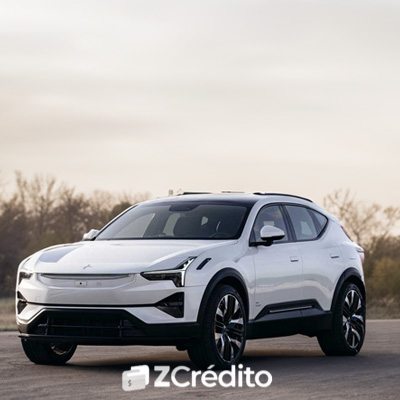Polestar 3 vs Ioniq 5: Check Out the Ultimate Battle of Electric SUVs 2025
Polestar 3 vs Ioniq 5 is one of the most exciting comparisons in the electric SUV space in 2025. As electric vehicles (EVs) gain momentum in the U.S. and around the world, these two contenders have emerged as top choices for drivers seeking performance, style, and sustainability.
If you’re considering an upgrade to a fully electric SUV this year, this head-to-head guide will help you make the right decision based on design, performance, technology, and value. In this comprehensive comparison, we’ll examine what each model brings to the table—from real-world driving range and advanced connectivity to design innovation and long-term ownership value.
Polestar 3 vs Ioniq 5: A Head-to-Head Comparison 🔍
Polestar, a Volvo-backed EV brand, has made a name for itself with sleek Scandinavian design and premium engineering. The Polestar 3 is the brand’s first SUV, combining performance with sustainable luxury. Hyundai, on the other hand, redefined what an electric SUV could be with the Ioniq 5, featuring bold retro-futuristic styling and practical EV technology.
In 2025, electric vehicles are no longer niche—they’re mainstream. Tax incentives, better charging infrastructure, and increased battery ranges have helped models like the Polestar 3 vs Ioniq 5 rise to the top. Both SUVs are packed with next-gen features, but each one appeals to a slightly different kind of driver.
Key Features Comparison ⚙️
When it comes to design, the Polestar 3 leans toward a minimalist, upscale aesthetic, with clean lines and a floating roof design. The Ioniq 5, on the other hand, offers a more distinctive look, with sharp creases, pixel-inspired LED lights, and a futuristic silhouette that turns heads. Inside, both deliver a premium experience, but the Ioniq 5 opts for a more spacious cabin with sliding rear seats and flat-floor architecture, while the Polestar 3 focuses on refined finishes and luxury materials.
In terms of technology and user experience, both models include large infotainment screens, over-the-air updates, and smartphone integration. The Polestar 3 offers a Google-based infotainment system with deep voice command functionality, while the Ioniq 5 includes Hyundai’s intuitive UI with support for Android Auto and Apple CarPlay. Safety-wise, both SUVs earn high marks with features like adaptive cruise control, lane-keeping assist, and blind-spot monitoring—but Polestar’s Volvo DNA gives it a slight edge in advanced driver-assist tech.
Driving Performance & Range ⚡
The Polestar 3 comes equipped with a dual-motor setup producing up to 517 hp in its Performance Pack version, delivering rapid acceleration and precise handling, especially for an SUV of its size. It also offers an adaptive air suspension system that enhances both comfort and dynamic driving. The Ioniq 5, though slightly less powerful at around 320 hp with AWD, still delivers a smooth and responsive drive with instant torque and composed handling.
Range is a critical factor in the EV race. The Polestar 3 provides an estimated 300-mile range, depending on configuration and driving habits. Meanwhile, the Ioniq 5 offers up to 303 miles of range on the RWD version, with slightly less for the AWD model. Both support fast charging, but Hyundai edges ahead with its 800V architecture, enabling ultra-fast charging from 10% to 80% in just 18 minutes under optimal conditions.
Key Highlights: Polestar 3 and Ioniq 5 🚘
Technology and Connectivity 🧠
Both vehicles are tech-forward, but they take slightly different paths. The Polestar 3 runs a Google Automotive OS, integrating Google Maps, Assistant, and the Play Store natively into the car’s system. It also features a head-up display and remote vehicle access via mobile app. The Ioniq 5 uses Hyundai’s proprietary interface, with dual 12.3-inch displays, customizable themes, and integration with the Hyundai Bluelink app for connected services.
Driver-assist features are robust on both, including highway driving assist, smart cruise control, and surround-view monitors. The Polestar 3 introduces more semi-autonomous functions, while Hyundai focuses on smart mobility integration, including future vehicle-to-grid (V2G) capabilities.
Battery & Charging 🔋
Charging performance is a big differentiator. The Polestar 3 supports 250 kW DC fast charging, enabling about 80% in 30 minutes. Its 111 kWh battery pack supports long-range driving and better energy efficiency. The Ioniq 5, however, uses an 800-volt platform, allowing 350 kW DC fast charging, making it one of the fastest-charging EVs available in 2025.
Battery durability and thermal management are strong in both, but Hyundai has the advantage of offering vehicle-to-load (V2L) capabilities, meaning you can power devices or even other EVs directly from the car. In terms of energy consumption, the Ioniq 5 tends to be more efficient, particularly in city driving.
Pricing and Value 💰
The Polestar 3 starts at around $83,900, positioning it as a luxury electric SUV. It appeals to premium buyers looking for Scandinavian design, advanced performance, and cutting-edge tech. In contrast, the Hyundai Ioniq 5 starts at a much more accessible $45,000, making it one of the most competitive options in its class, especially after applying federal EV tax credits.
When it comes to long-term value, Hyundai’s lower starting price, high efficiency, and lower maintenance costs make it a better pick for budget-conscious drivers. However, the Polestar 3 may hold value better due to its premium brand positioning and limited production numbers.
Technical Specifications and Final Verdict 📊
Polestar 3 Specifications

The Polestar 3 features dual electric motors, an estimated 517 horsepower, and torque vectoring for dynamic control. It measures around 193 inches in length and weighs over 5,600 lbs, with a modern SUV profile. It includes air suspension, 22-inch wheels, and a high-strength aluminum chassis for improved handling.
Interior highlights include vegan upholstery, a 14.5-inch center display, and an advanced driver-monitoring system. The brand focuses heavily on sustainability, with recycled materials used throughout.
Ioniq 5 Specifications

The Ioniq 5 offers multiple powertrain options, including RWD and AWD, with up to 303 miles of range and 320 hp. Its design is more compact than the Polestar 3, measuring 182.5 inches in length, and it weighs roughly 4,200 lbs. It features a low center of gravity, thanks to the E-GMP platform.
Inside, you’ll find a flat floor, reclining rear seats, and a movable center console, giving the cabin a lounge-like feel. It also offers solar roof options in select trims for added efficiency.
How Do They Compare? 🤔
The Polestar 3 wins in performance, premium build, and semi-autonomous driving features. It’s best suited for drivers who prioritize luxury and cutting-edge innovation. The Ioniq 5 shines in accessibility, practicality, and fast charging — ideal for tech-savvy urban drivers or families looking for a versatile EV.
Overall, the better value depends on your needs. If performance and prestige matter most, the Polestar 3 is a worthy investment. If affordability, charging speed, and cabin space are your priorities, the Ioniq 5 delivers unbeatable bang for your buck.
Where to Finance a Polestar Car in the U.S.: 3 Trusted Lenders to Consider 🏦
Polestar Financial Services offers direct leasing and loan options backed by Volvo, with flexible terms for qualified buyers.
Hertz, in partnership with Polestar, may offer leasing for ex-fleet models at reduced prices. Lastly, major U.S. banks like Bank of America and Chase often provide special rates for EVs, including Polestar, especially when applying online.
Where to Finance a Hyundai Ioniq in the U.S. – 3 Institutions to Explore 🏁
Hyundai Motor Finance provides exclusive APR offers, lease deals, and access to federal EV incentives. Credit unions, such as Navy Federal and PenFed, typically offer lower rates and fewer fees, especially for eco-friendly loans.
Finally, large U.S. banks like Capital One and Wells Fargo allow buyers to compare terms and prequalify easily for Ioniq 5 financing.
Which Electric SUV Wins? Final Thoughts on the Polestar 3 vs Ioniq 5 ⚡
In the battle of Polestar 3 vs Ioniq 5, both models stand tall as futuristic, capable, and compelling electric SUVs. The Polestar 3 is the better pick for luxury, high performance, and sophisticated design, while the Ioniq 5 dominates on affordability, charging speed, and smart practicality.
No matter which direction you choose, both vehicles represent the best of what electric driving has to offer in 2025 — sustainable, connected, and truly exciting.
FAQ: Polestar 3 vs Ioniq 5
1. Which SUV is faster, the Polestar 3 or Ioniq 5?
- The Polestar 3, with up to 517 hp, is significantly faster and more performance-oriented than the Ioniq 5.
2. Which has better range?
- Both are close, but the Ioniq 5 slightly edges out the Polestar 3 in some configurations, especially RWD models.
3. Is the Ioniq 5 cheaper to maintain?
- Yes, the Ioniq 5 generally has lower ownership and maintenance costs due to its lower starting price and proven reliability.
4. Do both qualify for EV tax credits?
- Yes, depending on final assembly and income eligibility, both models can qualify for up to $7,500 in federal EV tax credits.
5. Which SUV charges faster?
- The Ioniq 5 wins here, thanks to its 800V platform, offering ultra-fast charging up to 350 kW.